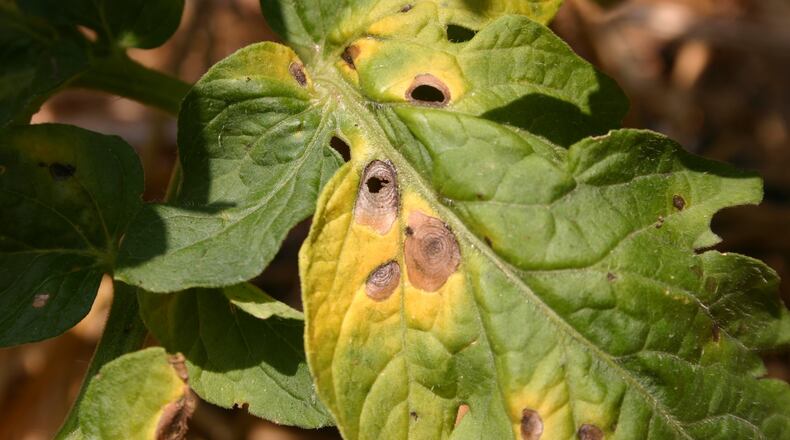Q: I and many others had a terrible tomato season because of early blight. Are there any tomatoes that are resistant to blight? Is there any successful treatment? Conversely, I have several volunteer cherry tomatoes that are disease free! Anne Stanley, Atlanta
A: Early blight has been a real problem this year because of all of the rain and high humidity. Different tomato varieties have various amounts of resistance but none are completely resistant to the disease. Mulching young tomatoes immediately after planting will help keep the disease at bay. A fungicide such as Daconil can be used to manage it once it gets started. My experience is the same as yours: The little wild cherry tomatoes that come up voluntarily in my garden seem to be completely carefree!
Q: I have been using wheat straw to mulch around my vegetable plants. Will the chemicals that may have been used on the wheat crop affect my vegetable plants? Things just don't seem to be growing as vigorously as in previous years. John Williamson, email
A: It is certainly possible for weed killers sprayed on wheat straw to affect vegetables but the symptoms are quite noticeable. Leaves thicken and twist and look very unnatural. My bet is that you don't have a problem with herbicides but with nutrients. We've had so much rain this year that unless you have fertilized your vegetables regularly they may simply be suffering from lack of nutrients. Use a water soluble fertilizer on your garden and see if things perk up in a few days. If so, wait two weeks and fertilize again.
Q: We have a very large staghorn fern in Jacksonville that we'll be taking to an area where there are deer. Do deer eat this fern? Phil Mahfood, email
A: I can't be 100 percent positive about staghorn ferns but most ferns are deer resistant. I suppose they might nibble on tender growth in the spring but I have seen plenty of fern glades in deer-inhabited woodlands with no apparent deer damage.
Q: I have a pecan tree that is suffering from pecan scab. I read where the only way to treat it is by spraying the whole tree. I can't accomplish that. Is there an alternative? Lisa Roper, Jonesboro
A: There is not an alternative. Some varieties of pecan are more resistant to the disease than others but that's nothing you can change now. 'Elliot', 'Sumner' and 'Amling' are resistant to scab. 'Desirable' and 'Papershell' are not. Springtime weather has much to do with how much scab disease your trees get each year.
Q: I have a crape myrtle with a white substance on the leaves and no blooms. What do I have? How do I treat it? Eric Braggs, email
A: I'm almost certain you have powdery mildew. Cool nights and warm, humid days provide the perfect environment for this disease to develop. Heavy winter pruning causes lush growth with little air circulation around the leaves. Myclobutanil (Immunox) and propiconazole (Infuse) will control the disease on new leaves. Consider spraying in May next year.
About the Author
Keep Reading
The Latest
Featured

